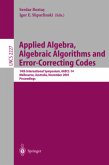In computing, a bus error is generally an attempt to access memory that the CPU cannot physically address. Bus errors can also be caused by any general device fault that the computer detects. A bus error rarely means that computer hardware is physically broken - it is normally caused by a bug in a program's source code. There are two main causes of bus errors: non-existent address. The CPU is instructed by software to read or write a specific physical memory address. Accordingly, the CPU sets this physical address on its address bus and requests all other hardware connected to the CPU to respond with the results, if they answer for this specific address. If no other hardware responds, the CPU raises an exception, stating that the requested physical address is unrecognised by the whole computer system. Note that this only covers physical memory addresses. When software tries to access an undefined virtual memory address, that is generally considered to be a segmentation fault rather than a bus error, though if the MMU is separate, the processor can't tell the difference.
Bitte wählen Sie Ihr Anliegen aus.
Rechnungen
Retourenschein anfordern
Bestellstatus
Storno








